If you’re a dog-lover, you’re sure to have heard of the beauties that are German Shepherds. With their elegance, fluffiness, and big hearts, this special breed is the perfect embodiment of man’s best friend. However, did you know you could get a short-haired German Shepherd vs long-haired?
Even those with many German Shepherd facts under their belt might not be aware of all there is to know about this unique breed variation. Read on to discover the similarities and differences between long and short-haired German Shepherds and some must-know facts about these furry friends.
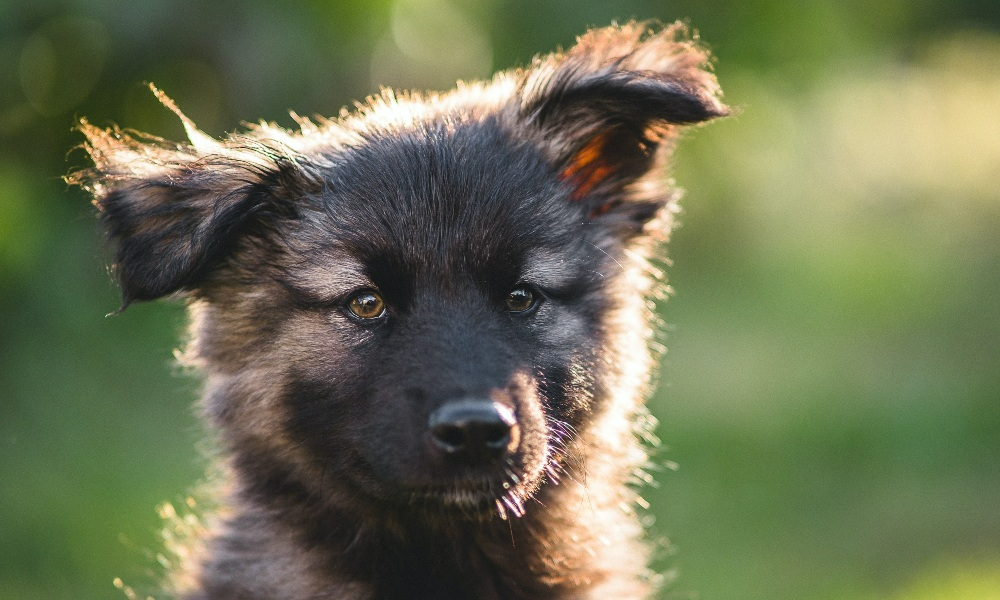
Contents
- 1 German Shepherd Dog Origins
- 2 Classification of Short and Long-Haired German Shepherds
- 3 Why Do Some German Shepherds Have Long Hair?
- 4 General Information About German Shepherds
- 5 German Shepherd Personality Traits
- 6 Hair Length and Maintenance
- 7 Temperature Regulation
- 8 Short-Haired German Shepherd vs Long-Haired Frequently Asked Questions
- 9 Are You Ready to Adopt One of These Popular Pups?
German Shepherd Dog Origins
As their name implies, the German shepherd breed originated in Germany. In the late 19th century, Max von Stephanitz used sheepdogs from Northern and Central Germany to begin breeding the world’s first standardized German Shepherds. He designed this breed to work predominantly as herding dogs.
As a result of natural variation, some of these canines had longer fur than others. Von Stephanitz considered this long coat inconvenient for the outdoor (often messy) nature of German Shepherds’ work and focused on breeding dogs with shorter hair.
Over time, global breeders continued to see long-haired German Shepherds as inferior to their short-haired counterparts. However, as the breed became more domesticated, their long fur became less of an issue. Many people came to prefer the long-haired gsd as pets because of their extra fluffiness, making them perfect cuddle partners.

Image by dio arapogiannis on Pexels
Classification of Short and Long-Haired German Shepherds
Just like each human is unique, so is each German Shepherd. How do professionals classify the difference between this breed’s short and long-haired variations?
Coat Length and Layers
The short-haired gsd is more common than those with long hair — only around five percent of all German Shepherds fall under the category of long-haired. Despite their rarity, it’s relatively easy to recognize long-haired gsds because of their (you guessed it) distinctive long, silky fur.
These long-haired beauties have coats usually between two and six inches long. Anything between one and two inches means you’re dealing with german shepherd with a short coat.
Another important marker of a long-haired German Shepherd is the extra tufts of fur around their faces (often resembling a lion’s mane), ears, hindquarters, tails, and backs of their legs.
Due to all their extra fluff, people sometimes confuse these pups with other longer-coated breed crosses, such as the German Shepherd Husky mix. While their lengthy fur is not the breed standard, long-haired German Shepherds are just as purebred as their short-haired relatives.
Besides hair length, layering also plays a key role in the classification of this breed. While short-haired German Shepherds will always have an undercoat beneath their top layer of fur or a double coat, those with longer hair are often born with just a topcoat.

Competing in Shows
Despite the fact that long and short-haired German Shepherds come from the same bloodline (meaning they’re both purebred), those with longer hair are often not allowed to compete in professional dog shows.
Short hair German Shepherds have traditionally been considered superior to their long-haired counterparts. However, this has slowly changed over time. Nowadays, certain organizations like the International Canine Federation allow long hair German Shepherds to compete in shows — unfortunately, this still does not apply to those without an undercoat.
Why Do Some German Shepherds Have Long Hair?
The main difference between the two types of german shepherds is driven by genetics. Long-haired German Shepherds are born from parents who carry the elusive long-haired gene. This gene can be carried by any German Shepherd (either long or short-haired) but is still fairly rare.
Another obstacle to note is that the long-haired gene is also recessive, meaning both fluffy parents need to carry it for it to be passed on to any offspring. This links to the fact that the short-haired gene is far more dominant and will easily overrule any other fur-related genes during breeding.
Considering all the above obstacles, it’s easy to see the short-haired dogs are the more common breed variation. However, nature always finds a way, and the longer coat German Shepherds continue to be born.
Price Variations for Short Haired German Shepherd vs. Long Haired German Shepherd
As a result of their rarity, a reputable breeder could place extra value on long haired German Shepherds and sell them for a higher price. However, this isn’t usually the case.
In breeding circles, there’s a significant demand for traditional short-haired German Shepherds who can become working dogs or participate in competitions. Consequently, breeders often disregard puppies with longer coats and sell them for a cheaper price.
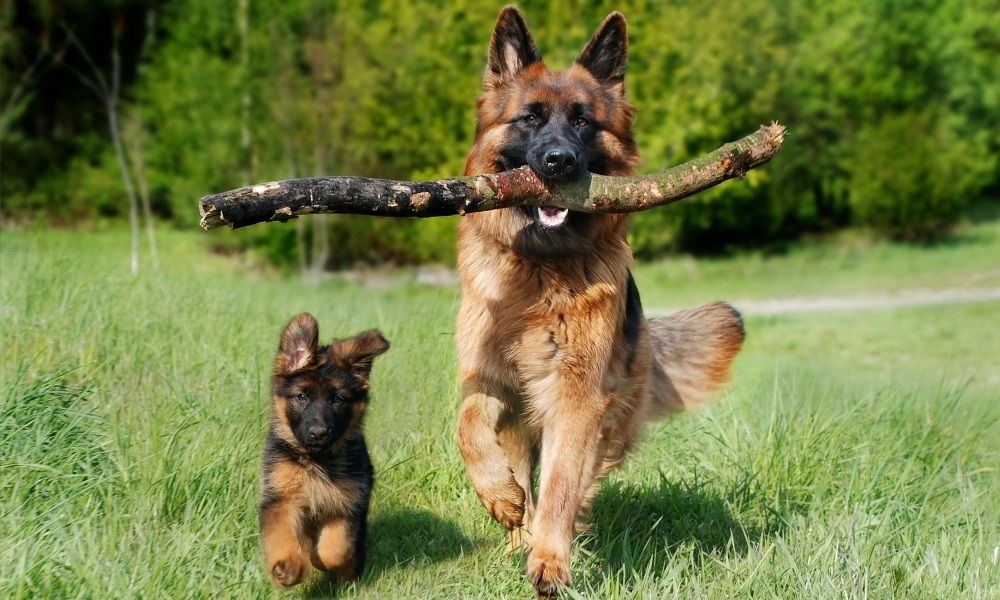
Image by Anja on Pixabay
General Information About German Shepherds
Besides their different hair lengths, long and short-haired German Shepherds are similar regarding their other physical attributes. Take a look at what you can expect when adopting a German Shepherd.
Size and Coloring
There’s no denying that German Shepherds are big dogs. These canines can grow to around 26 inches (66 centimeters) and usually weigh between 50 and 90 pounds (27 to 41 kilograms).
However, don’t let their size give you the wrong impression. A German Shepherd’s heftiness combines to form a strong, agile, and regal-looking package.
In terms of their coats, German Shepherds come in various colors, and their fur usually contains more than one shade. An especially well-known color combination is a mixture of caramel and black — this is what most people will picture when they think of a typical German Shepherd.
However, several other dazzling color options contribute to German Shepherds being one of the most beautiful dog breeds. While black fur usually features on their muzzles and backs, this can be combined with red, brown, cream, and silvery gray.
Certain German Shepherds also have solid-colored coats. Although quite rare, it is possible to find these dogs in shades of pure black, brown, silver, white, and blue (a pale black with a blue tint).
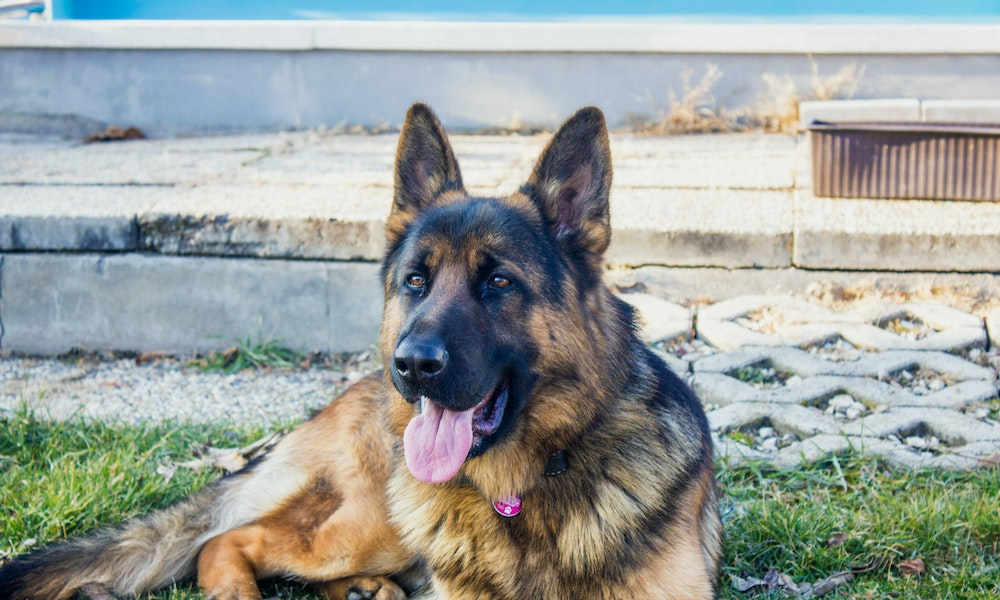
Health and Lifespan
Since long and short-haired German Shepherds come from the same bloodline, they both have the same basic level of health and are at risk for the same conditions.
Generally, German Shepherds are reasonably healthy and can live up to the ripe old age of 13. However, like most dogs, this breed is prone to specific health issues that owners should be aware of.
As they get older, German Shepherds can develop problems with their hips and back legs. If this is left untreated, it can progress into canine hip dysplasia. Luckily, veterinary science offers many treatment plans to help prevent and manage these kinds of joint issues.
Another thing to be on the lookout for is digestive problems. German Shepherds have sensitive stomachs that can be easily upset by rich foods or excessive eating. Thankfully, it’s fairly easy for owners to monitor this issue and ensure their dogs avoid potentially triggering foods.
Educating yourself about potential health risks is one of the best ways to care for your German Shepherd. It’s also important to take them for regular checkups at your local vet to ensure they stay happy and healthy.

Image by Tima Miroshnichenko on Pexels
Physical and Mental Stimulation
You already know that German shepherds are big dogs. However, you might not know that with this sturdy physique comes equal energy. German shepherds love to be active and require a fair amount of exercise (preferably one to two hours every day).
Their spirited disposition makes German Shepherds the perfect fluffy companions for active and adventurous owners. These dogs will love accompanying you on walks, hikes, and runs. Beware, though, their long legs mean they are one of the fastest dog breeds, reaching maximum speeds of just under 30 miles per hour (48 kilometers).
German Shepherds’ exuberant and bouncy nature also means they need quite a lot of space. They’re not well-suited to living in small or cramped homes and, ideally, should have access to a good-sized garden where they can play.
As a result of their extreme intelligence, German shepherds also require regular mental stimulation. Owners can achieve this through training (these clever canines are sure to impress your friends with all the tricks they can learn) and providing mentally engaging toys.
Meeting the needs of a German Shepherd can sometimes be challenging for owners. However, at the end of the day, the love and companionship you and your family members receive in return make it all worthwhile.
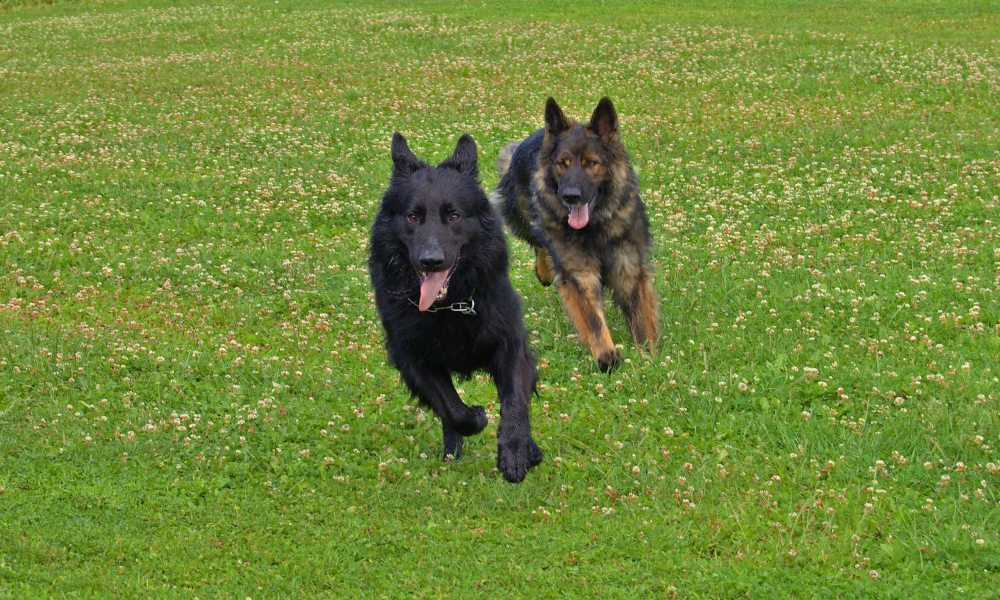
Image by PxHere on PxHere
German Shepherd Personality Traits
A dog’s personality greatly influences how they’ll fit into your home. So, what kind of personality do German Shepherds have, and does this differ between short and long-haired members of this breed?
General Personality
All German Shepherds (regardless of hair length) are incredibly affectionate, loyal, protective, and intelligent. Provided they receive proper socialization as puppies, these dogs easily get along with humans and other animals, making them a perfect fit for families.
An especially endearing trait of German Shepherds is their fun-loving and active nature. They’ll happily play with their humans for hours on end and are great companions for energetic children. German Shepherds’ great intellect also means they’re easily trainable. Combined with their devoted nature, this makes them one of the best emotional support dog breeds.
However, their intense loyalty to their loved ones means German Shepherds do not thrive in isolation. Owners should bear this in mind and ensure they don’t leave these fluffy friends alone for more than a few hours at a time.
Image by Thirdman on Pexels
Personality Variations Based on Hair Length
There are common misconceptions that long and short-haired German Shepherds have differing personalities. However, there is no scientific evidence to prove this. Instead, all German Shepherds have similar natures. So where does this misconception come from?
German Shepherds’ hair length often influences the roles they take on or learn to do (for example, being a police dog versus a family pet). These different roles impact how their personalities develop, leading to certain traits presenting more strongly than others.
Short-haired German Shepherds’ coats easily adapt to a variety of outdoor conditions. Combined with their high intelligence levels, this makes short-haired Shepherds ideal working dogs. They typically undergo intense proper training programs to take on roles within the field of institutional service. These include becoming a service dog or doing police work and becoming police dogs.
Fun fact: In the mid-20th century, a German shepherd made history by becoming the first guide dog for someone with visual impairment.
As opposed to short-haired German Shepherds, long-haired variations of this breed are usually kept as pets and stay-at-home guard dogs. They don’t have to undergo rigorous training to do this, meaning they’re often naturally playful and forthcoming.
This contrasts with working German Shepherds (short-haired), whose jobs require them to be extremely disciplined. To outsiders, this can sometimes make them come across as having a serious and sometimes antisocial nature.
Despite these perceived differences in personality, all German shepherds share the same affectionate and loyal temperament. Any differences in their behavior are a result of their upbringing rather than a genetic predisposition.
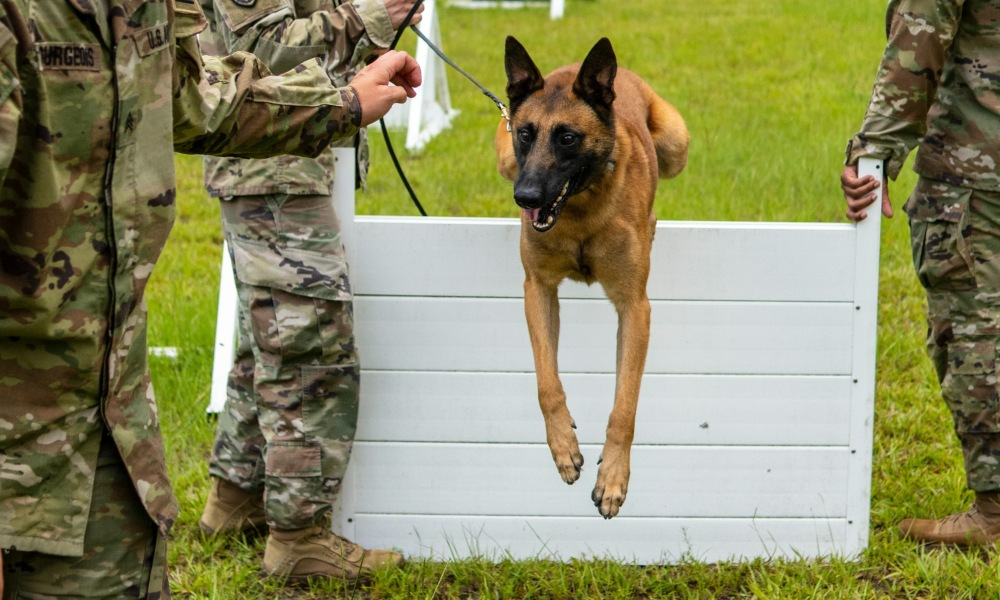
Image by Christina Petsos on Pexels
Hair Length and Maintenance
Long and short-haired German Shepherds have very different coats, so it’s natural that they’ll need different kinds of care. But how exactly does hair length impact the maintenance required for your German Shepherd?
German Shepherds and Shedding
All Shepherds have thick fur, so shedding is unavoidable no matter their hair length. As a result, German Shepherds don’t fall under the category of hypoallergenic dog breeds and are not well-suited to people prone to allergies.
When it comes to coat care and maintenance, there are pros and cons for both the long and short-haired German Shepherd varieties. While longer hair will shed throughout the year, short hair sheds predominantly during spring and fall (high shedding seasons related to changes in weather).
However, on the other side of the same coin, short-haired German Shepherds’ undercoats cause them to shed more intensely than the long-haired dogs, who often only have topcoats.
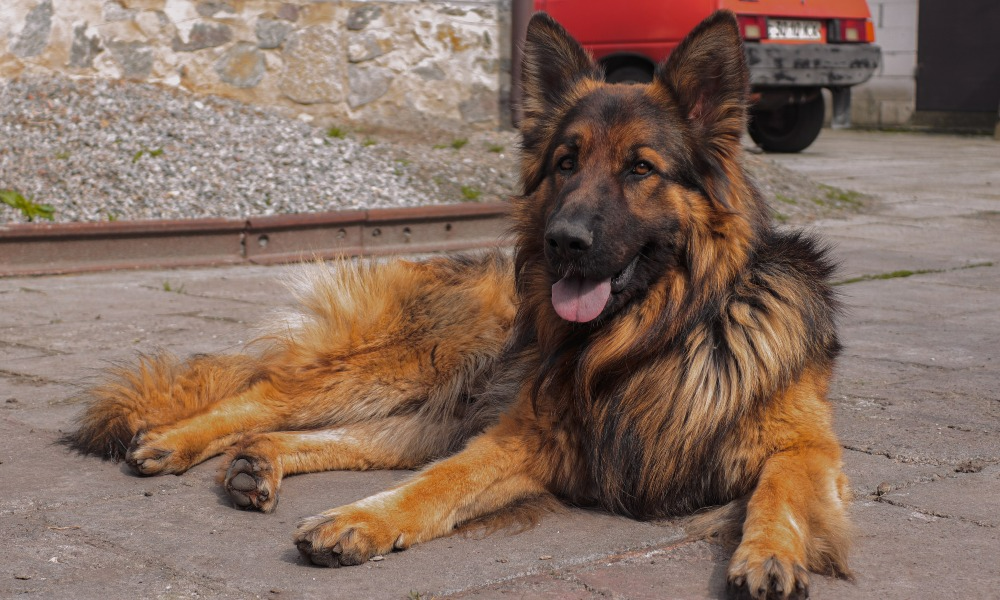
Image by Irina Solianyk on Pexels
Grooming Recommendations
In terms of grooming, your approach will vary based on your German Shepherd’s hair length. For example, lengthier coats are more prone to knotting and becoming matted.
To help prevent this from happening, you your long-haired pet will need regular brushing on average three to four times a week. Using a dog-friendly conditioner when bathing them is also handy, as this will keep their coats sleeker and prevent excessive tangling.
However, ensuring you don’t over-wash your German Shepherd is vital. Both long and short haired Shepherds only require around three baths per year. Washing them too regularly can disrupt the balance of the natural oils their coats produce.
When brushing a German Shepherd, it’s essential to be conscious of whether they have an undercoat. German Shepherds with short hair always have undercoats, meaning they require more thorough brushing to remove loose hair from both coats.

Those with longer fur often only have topcoats, meaning this isn’t an issue for them. However, their lack of an undercoat often results in increased sensitivity, so you should brush them extra carefully to avoid scratching or irritating their skin.
Temperature Regulation
As mentioned before, German Shepherds were originally meant to be outdoor working dogs. A major reason for this was their bodies’ ability to adapt to different temperatures conveniently.
However, this process is much easier for the dogs with a shorter coat than long-haired shepherds. You may be wondering why this is the case, and the answer is a simple one: undercoats. This layer of fur plays a huge role in temperature regulation.
German Shepherds in Cold Weather
Short-haired German Shepherds’ undercoats act as natural insulators that keep them warm in cold weather. Long-haired German Shepherds lack this extra protection, meaning they’re more easily affected by chilly weather. These pups also have a higher risk of developing conditions like hypothermia in freezing climates.
However, this doesn’t mean they can’t still play around with their short-haired relatives in the snow. By taking a few simple precautions, owners can ensure the comfort and safety of their long-haired German Shepherds in the cold. This commonly includes kitting out your fluffy friend in waterproof boots and a warm jacket.
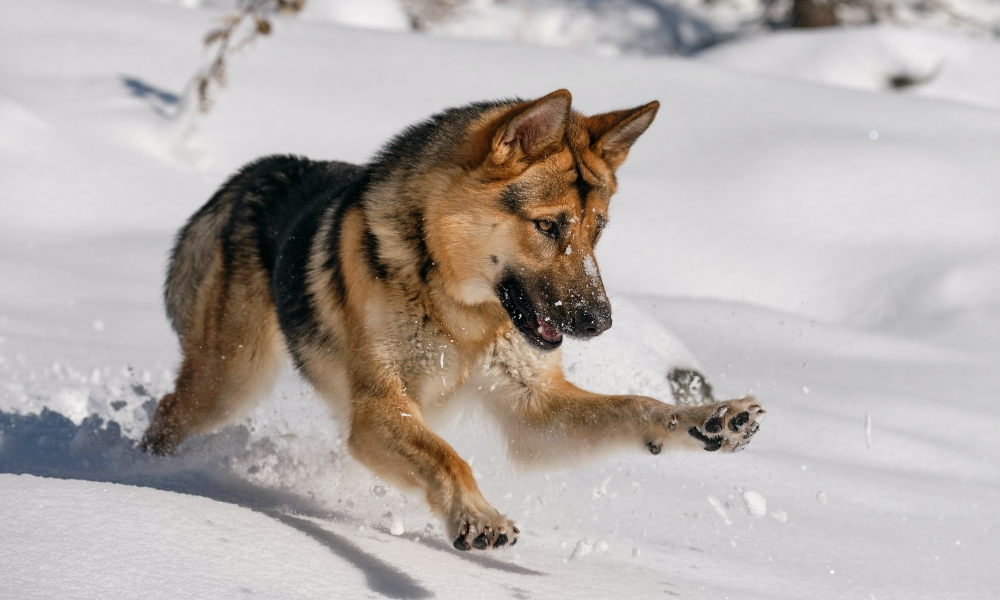
Image by marco allasio on Pexels
German Shepherds in Warm Weather
Regarding warm weather, you might expect German Shepherds with short hair to suffer more than their long-haired counterparts. However, given their origins in Germany’s naturally cold climate (especially its snowy winters), both breed variations struggle with heat in their own way.
It’s important that owners help their Shepherds to stay cool during summer. Simple ways to do this include giving them lots of water, ensuring they have access to shady spots throughout the day, and taking them for walks during the early mornings or the evenings when the sun is less harsh.
Due to their common lack of temperature-regulating undercoats, long-haired German shepherds are especially susceptible to the heat. The length of their fur adds to this issue by making it more difficult for them to cool down.
Trimming or shaving their fur might seem like an obvious solution to this problem. However, this is not the case. Both German Shepherds’ variants struggle to regrow their coats once cut. This improper regrowth only causes further issues because it interferes with these dogs’ ability to regulate their body temperatures.
Short-Haired German Shepherd vs Long-Haired Frequently Asked Questions
Below are the answers to some frequently asked questions about German Shepherds’ hair length.
Can Two Short-Haired German Shepherds Have a Long-Haired Puppy?
Yes. If two short-haired German Shepherds carry the gene for long hair, they can have a long-haired puppy.
It’s even been known for a litter to contain German Shepherd puppies with both long and short coats, as the gene is present in both parents but not passed down to all of their offspring.
How Can You Tell if a German Shepherd Will Be Long-Haired?
If two long-haired German Shepherds have puppies together, it’s a given that these puppies will have the same lengthy coats as their parents. However, considering the rarity of longer-haired German Shepherds, it may be challenging to find two potential parents.
If either one or both of the parents have short hair, there’s no sure way to tell the length of their puppies’ coats until they are born.
Which German Shepherd Coat is Best?
There is no right or wrong regarding German Shepherds’ coats. The ‘best’ German Shepherd coat depends entirely on what you want a German Shepherd for.
If you’re looking for a lovable pet, then long- and short-haired German Shepherds are excellent options. However, if you want a working dog, then a short-haired pup is the way to go.
Are You Ready to Adopt One of These Popular Pups?
With their gentle nature, intense loyalty, and wonderfully soft fur, it’s no wonder that German Shepherds (both the long and short-haired varieties) are among the most popular fluffy big dog breeds out there for dog owners.
No matter what kind of German Shepherd you get, this fun-loving and affectionate furry friend will quickly find a place in both your home and heart.

Image by RDNE Stock project on Pexels

